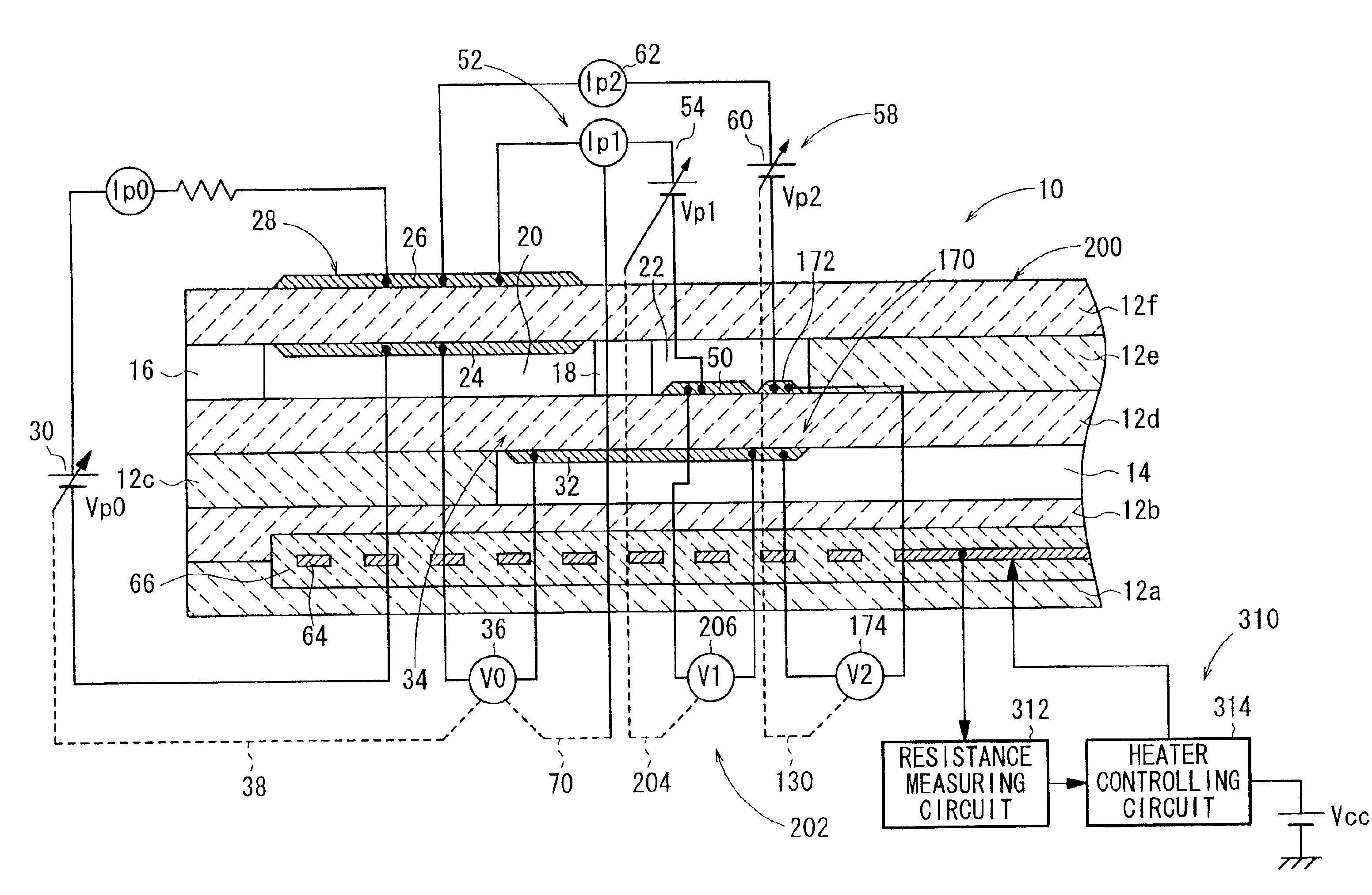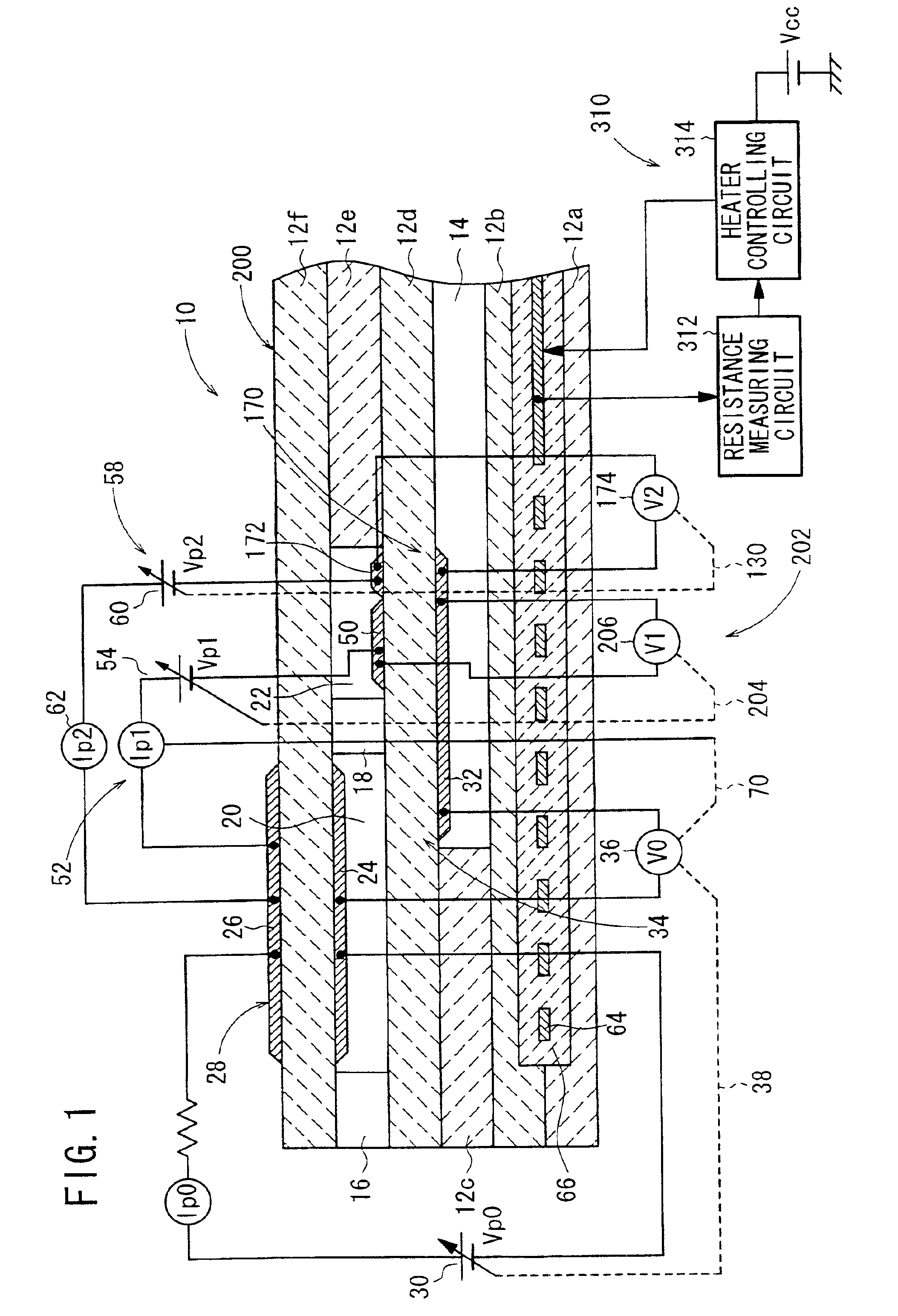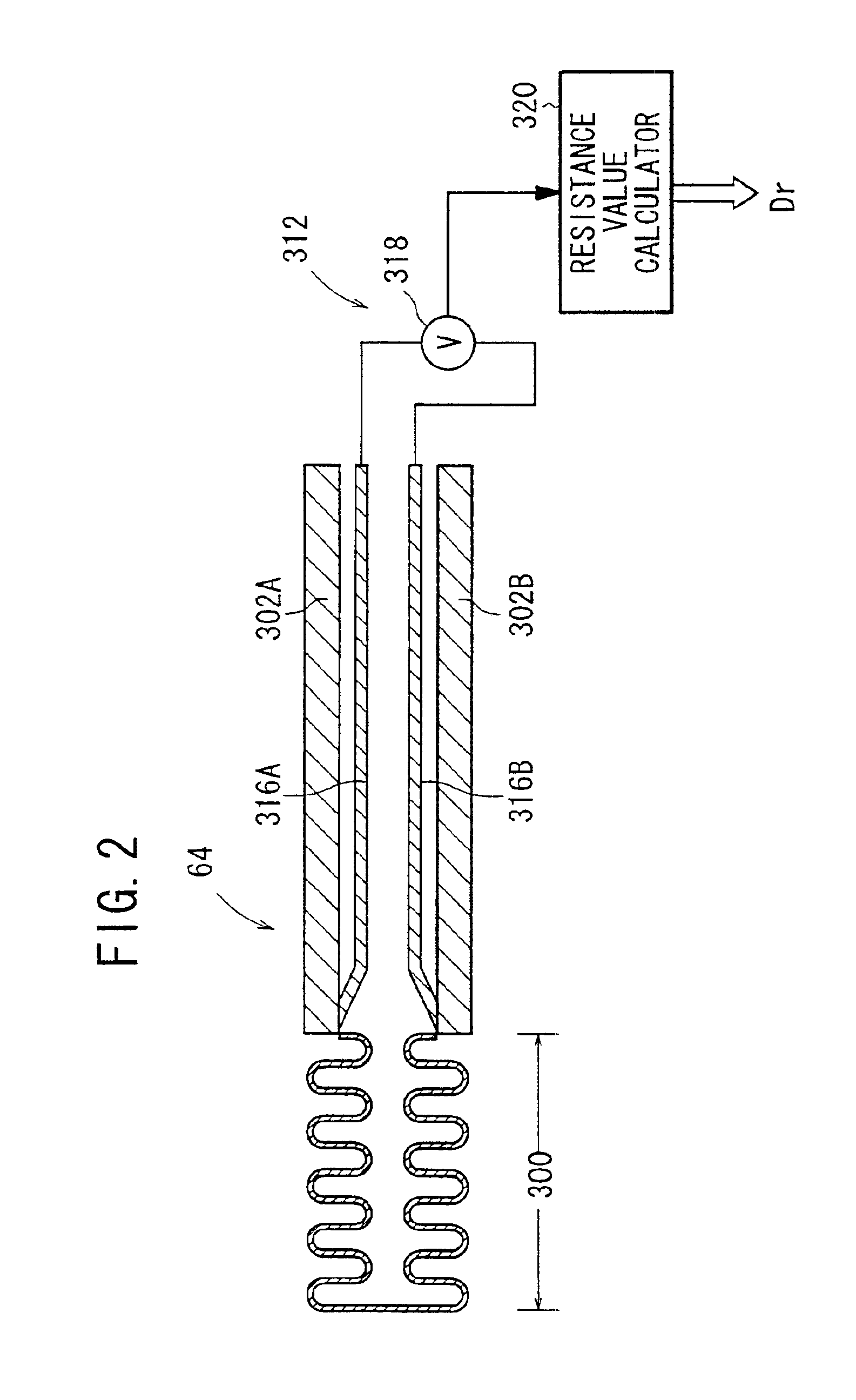Gas sensor and method of heating the same
a technology of gas sensor and heating unit, which is applied in the direction of liquid/fluent solid measurement, electrochemical variables of materials, instruments, etc., can solve the problems of large amount of nox produced and the inability to measure the concentration of nox, and achieve the effect of increasing the resistance of the heating uni
- Summary
- Abstract
- Description
- Claims
- Application Information
AI Technical Summary
Benefits of technology
Problems solved by technology
Method used
Image
Examples
embodiment 1
[0144]The gas sensor of the embodiment 1 uses the control switching circuit 330B of the second example. The temperature of the heater 64 is increased at a speed not more than 40 degrees centigrade / sec. when the temperature of the substrate is 600 degrees centigrade or more. The temperature of the heater 64 is increased at a speed not more than 100 degrees centigrade / sec. when the temperature of the substrate is 500 degrees centigrade or less.
[0145]The range of gas flow rate for the first experiment is determined based on an automobile application. The experiment is performed at a room temperature while changing the gas flow speed by a gas blower. In FIG. 15, results of the comparative example 1 are plotted by squares, and results of the embodiment 1 are plotted by circles. It can be seen that the defective rate of the comparative example 1 is shown by a curve A, and the defective rate of the embodiment 1 is shown by a curve B.
[0146]According to the experiment, no formation of cracks...
embodiment 2
[0151]In contrast, in the embodiment 2, the gas sensor has the voltage measuring lead (316A, for example). The resistance of the heating unit 300 is directly controlled at a constant value. Therefore, when the substrate is heated and the temperature of the current lead 302A, 302B is increased, the change in the temperature of the substrate 200 is small. Thus, the controllability of the heater 64 is not affected substantially by the change of the gas temperature.
PUM
| Property | Measurement | Unit |
|---|---|---|
| temperature | aaaaa | aaaaa |
| temperature | aaaaa | aaaaa |
| electric current | aaaaa | aaaaa |
Abstract
Description
Claims
Application Information
 Login to View More
Login to View More - R&D
- Intellectual Property
- Life Sciences
- Materials
- Tech Scout
- Unparalleled Data Quality
- Higher Quality Content
- 60% Fewer Hallucinations
Browse by: Latest US Patents, China's latest patents, Technical Efficacy Thesaurus, Application Domain, Technology Topic, Popular Technical Reports.
© 2025 PatSnap. All rights reserved.Legal|Privacy policy|Modern Slavery Act Transparency Statement|Sitemap|About US| Contact US: help@patsnap.com



